The Transformation of T. rex
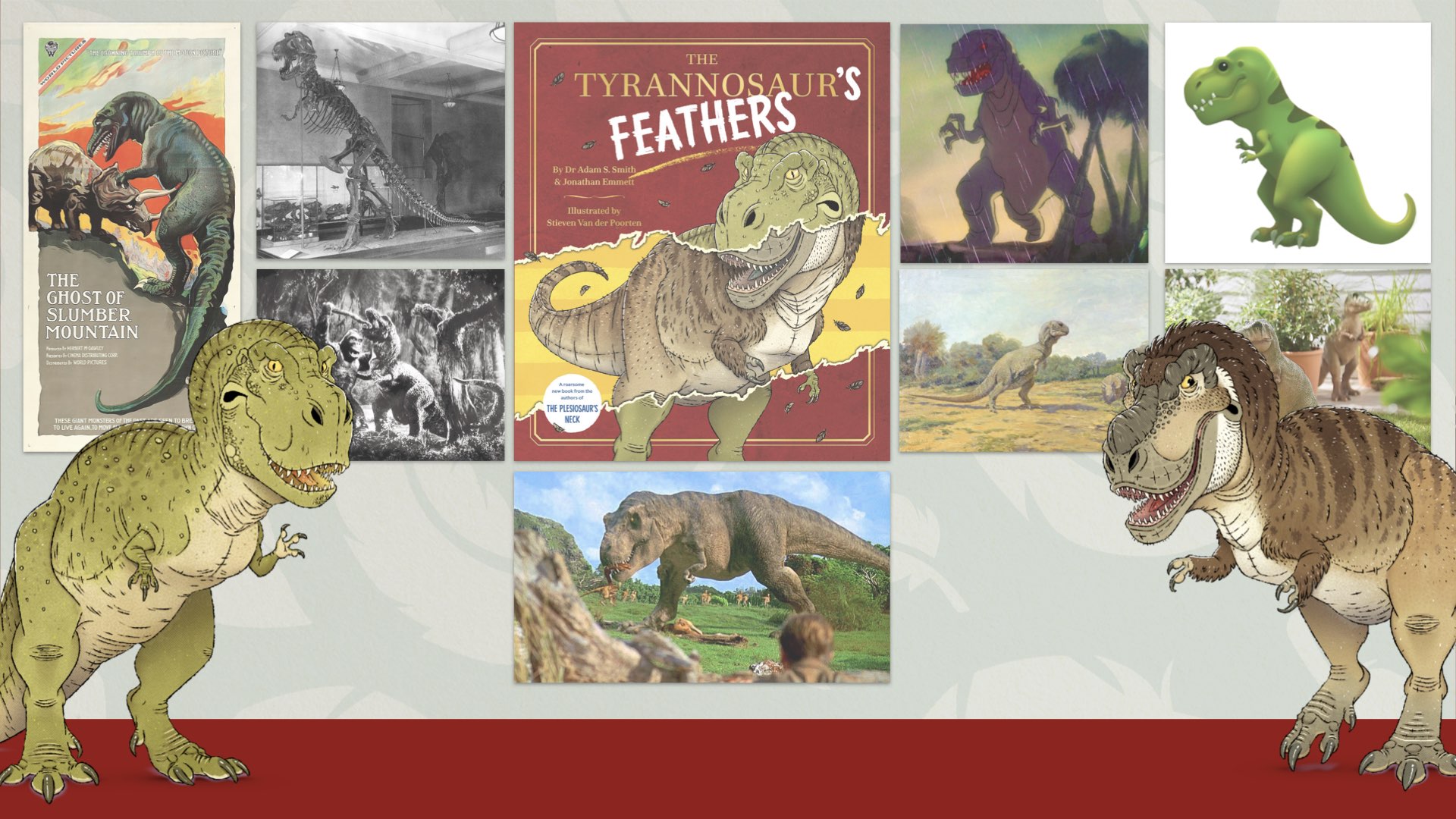
The Tyrannosaur’s Feathers, my new non-fiction picture book co-written with palaeontologist Adam Smith and illustrated by Stieven Van der Poorten, takes an amusing and informative look at how new discoveries have transformed our understanding of the appearance of Tyrannosaurus rex, arguably the most famous of all the dinosaurs.
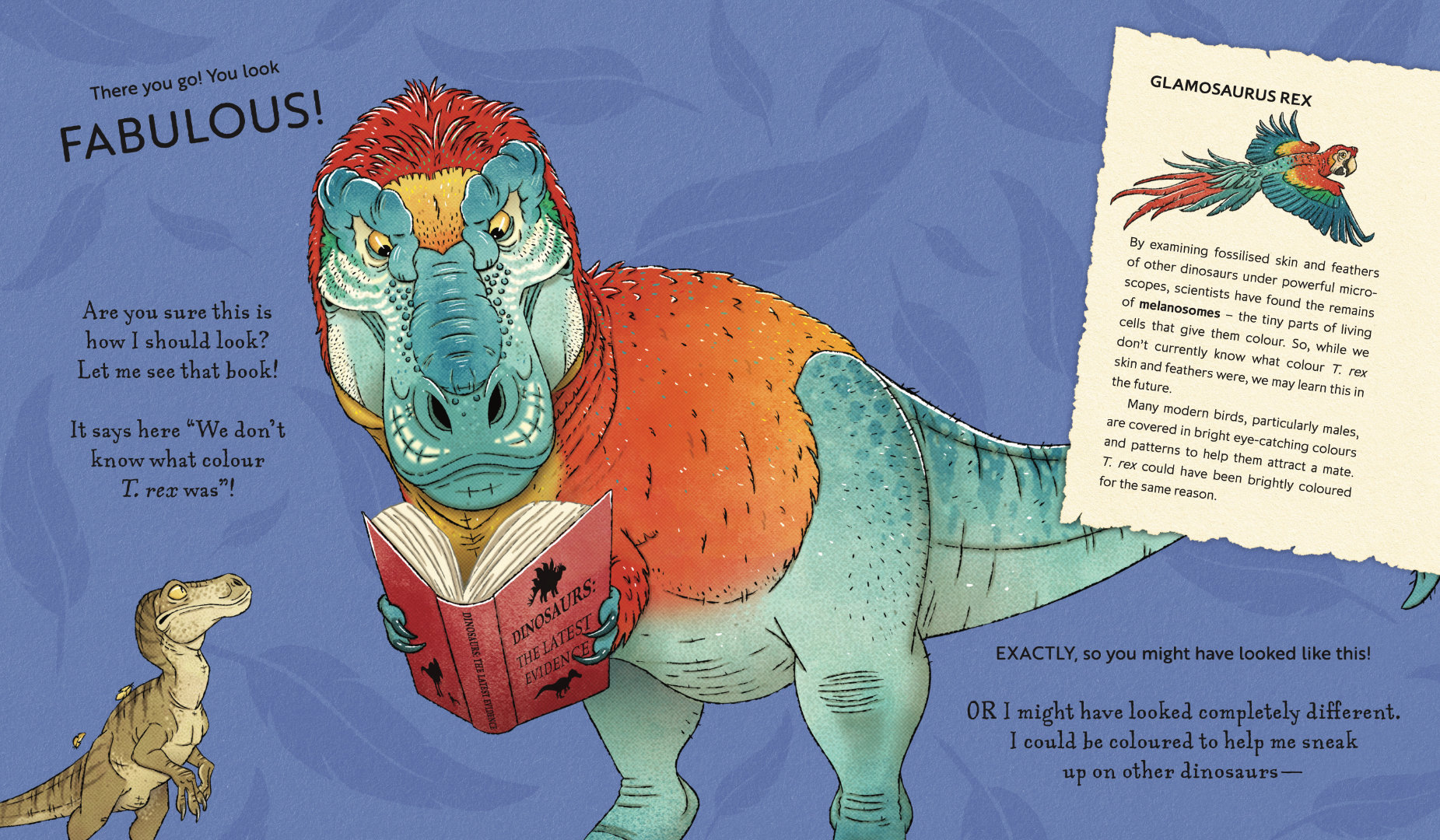
One of the sources Adam and I looked at when we were researching the book was paleoart – artwork that attempts to depict prehistoric life according to scientific evidence. Another source was images of T. rex in popular culture. Together these sources have shaped the way people imagine T. rex to have looked. So I thought, I’d share a few notable examples of both in this blog post.
The first fossilised bones of a T. rex were discovered by palaeontologist Barnum Brown in Wyoming in the US in 1900. Eight years later, Brown found a more complete T. rex skeleton in Montana. In 1915 this skeleton was put on show at the American Museum of Natural History in New York in an upright position, with its tail resting on the ground.
The T. rex skeleton discovered by Barnum Brown as it was first displayed in the American Museum of Natural History.
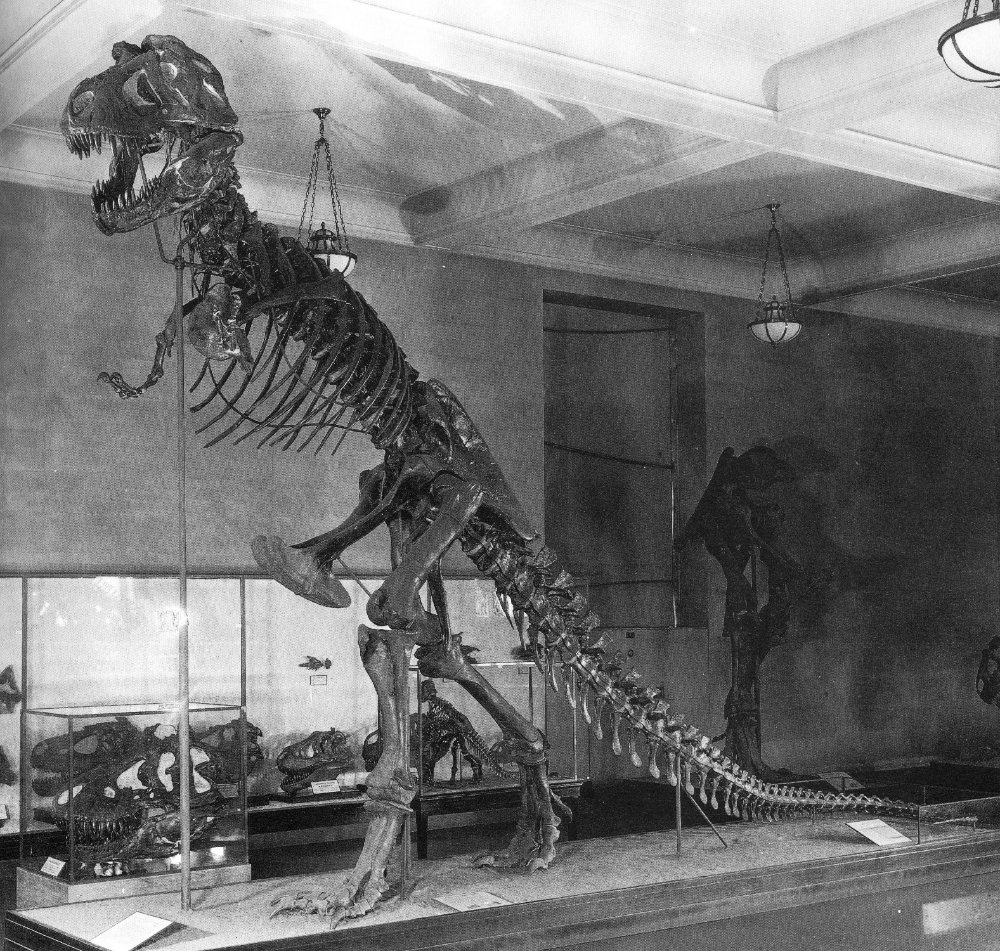
In 1916, the museum commissioned paleoartist Charles Knight to paint the T. rex. Knight showed the dinosaur in the upright kangaroo-like pose that the skeleton was displayed in.
T. rex is a member of a group of dinosaurs called theropods and Knight gave his T. rex three fingers on each hand as this was the number found in the fossils of other theropod dinosaurs.

In 1918, T. rex made the first of many on-screen appearances in the film The Ghost of Slumber Mountain. Director and stop-motion animator Willis O’Brien based his T. rex on the upright dinosaur in Charles Knight’s painting, but gave it exposed teeth instead of lips.

A scene and poster from the 1918 film The Ghost of Slumber Mountain.
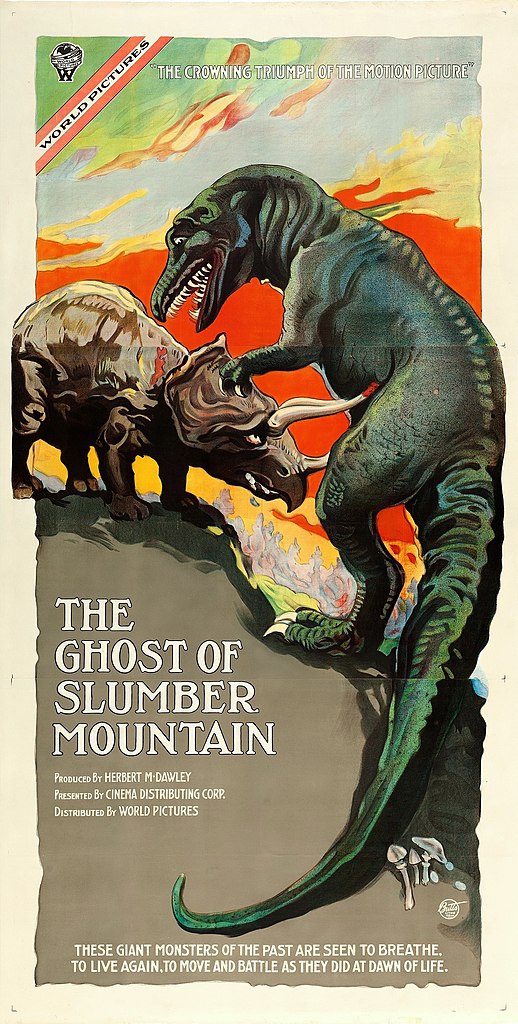
In 1933 O’Brien created another T. rex for the film King Kong. The film was a worldwide box office success, helping to establish T. rex as a popular movie monster.
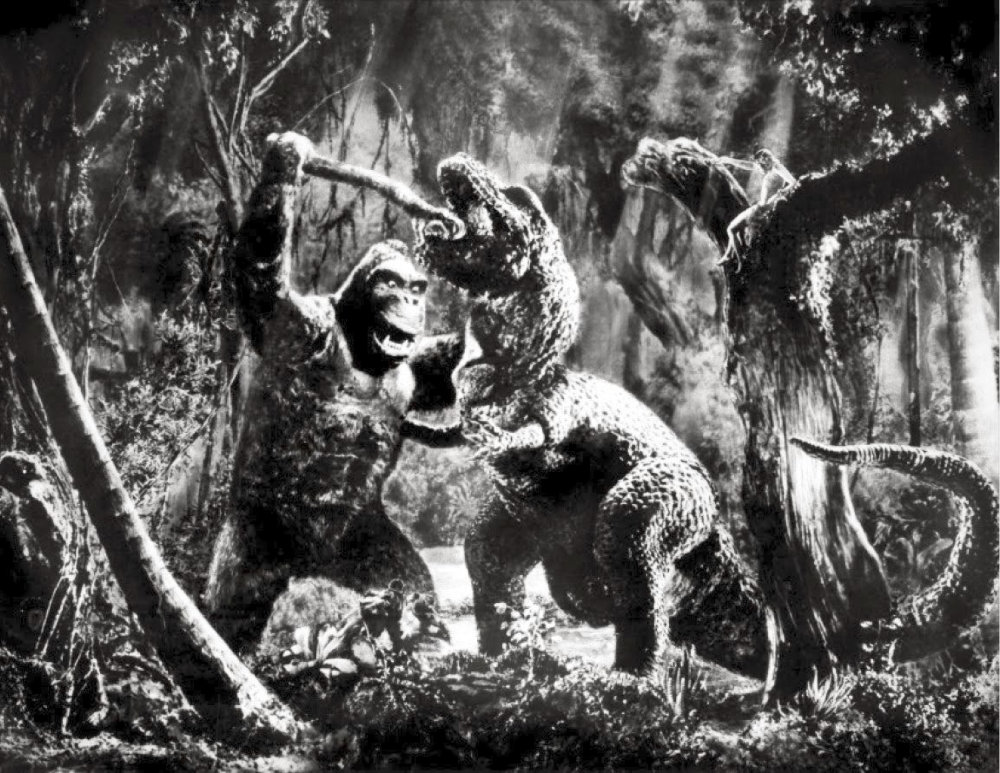
In 1940 T. rex made a show-stopping appearance in Walt Disney’s Fantasia. Disney employed Barnum Brown, the palaeontologist who had first discovered T. rex, to advise the animators on how the dinosaurs in the film should be depicted. The T. rex in Fantasia was also in the upright kangaroo pose and had lipless teeth and three fingered hands .
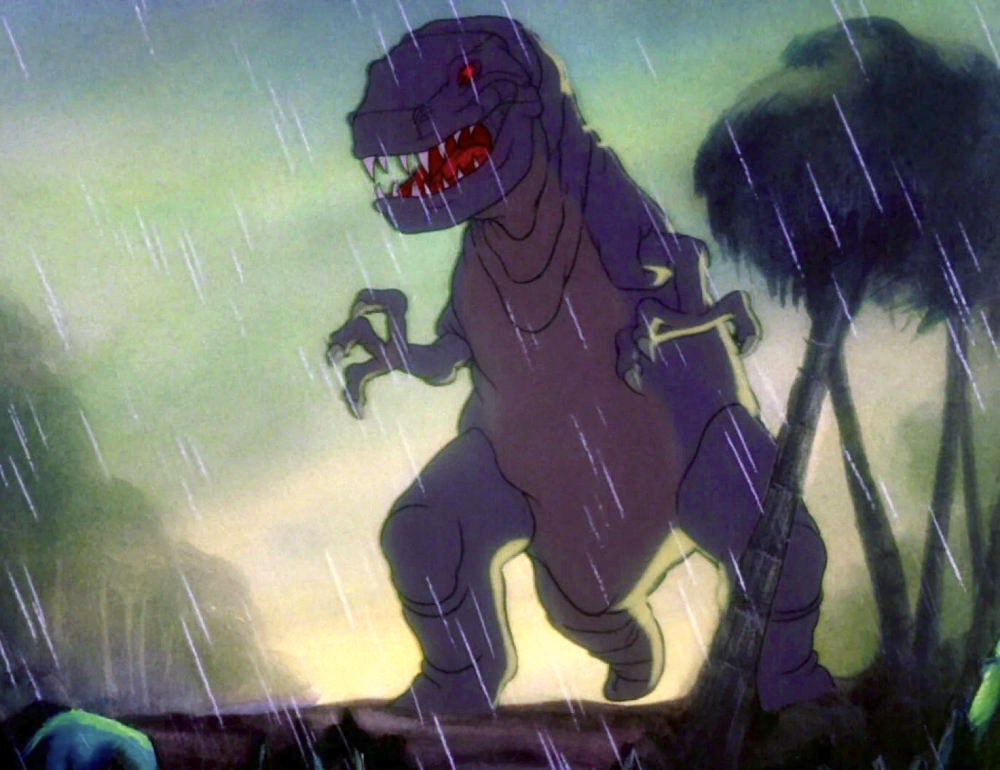
Although many palaeontologists had suspected that T. rex might have had two rather than three fingers for some time, this was not confirmed until 1988 when a T. rex fossil with intact arms, complete with two-fingered hands, was discovered in Montana, US.
As more T. rex fossils were discovered, experts learnt more about how T. rex bones fitted together. The angle at which the thigh bones fit into the hip bones suggests that T. rex’s hips were normally tilted forward, so that its tail was in the air. Towards the end of the last century, this and other evidence convinced palaeontologists that the upright kangaroo pose was incorrect and that T. rex’s spine would have been held horizontally.
The new pose was adopted by the T. rex that featured in the 1993 film Jurassic Park.
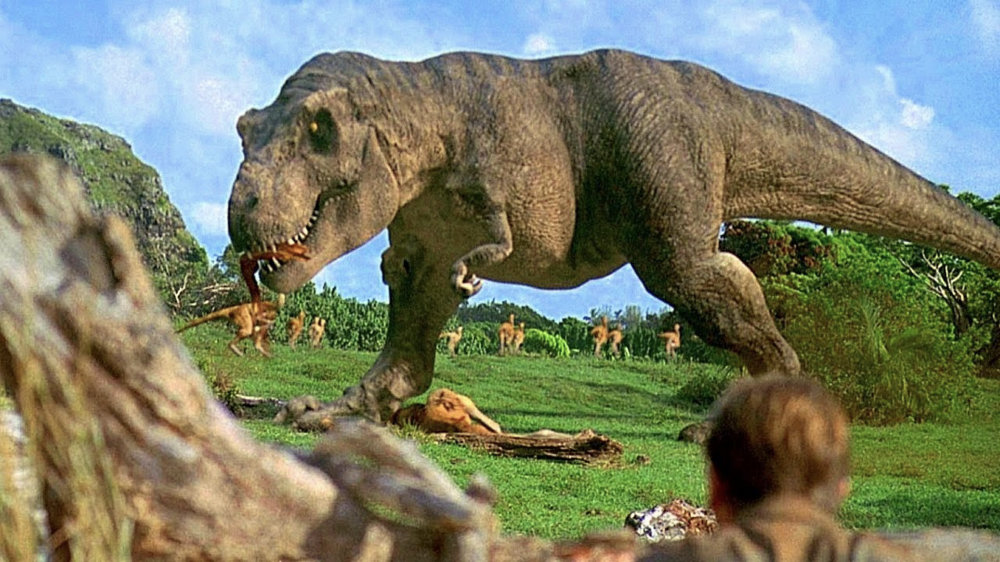
The last forty years has seen many new discoveries that have resulted in changes in T. rex’s appearance. For example, the discovery that T. rex had a wishbone connecting its shoulder blades resulted in T. rex’s arms being moved closer together on the front of its body. And research published earlier this year strongly suggested that theropod dinosaurs, including T. rex, had lips instead of bare teeth.
But the most dramatic change in T.rex’s appearance may be the addition of feathers. Fossils showing that theropod dinosaurs had feathers were first found in China in the 1990s. Since then, the fossils of “thousands of feathered dinosaurs have been discovered” including a fossil of another tyrannosaur called Yutyrannus. So, it’s reasonable to think that T. rex may also have been feathered. This is reflected in the appearance of this T. rex toy, first produced in 2017.
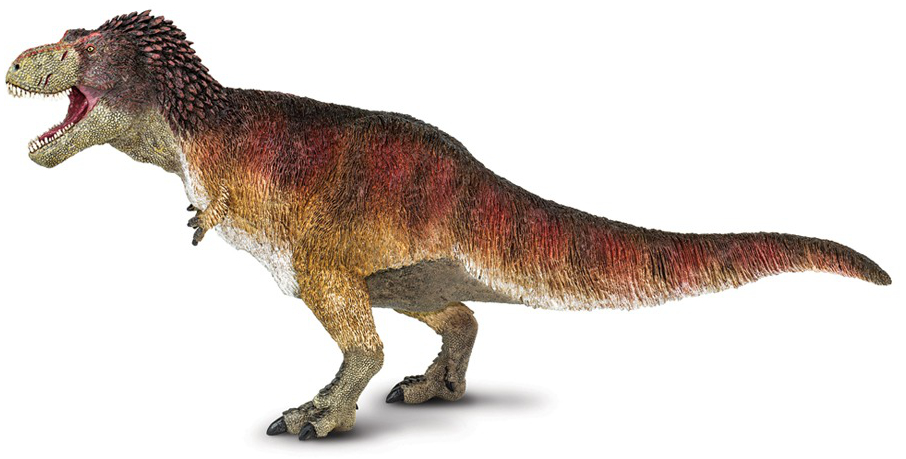
Wild Safari Feathered T. rex toy, first produced in 2017.
Despite the growing number of depictions of T. rex that reflect the latest evidence, outdated depictions continue to appear. The current T. rex emoji, released in 2017 (the same year as the Wild Safari T. rex model shown above), still shows T. rex in the kangaroo pose.
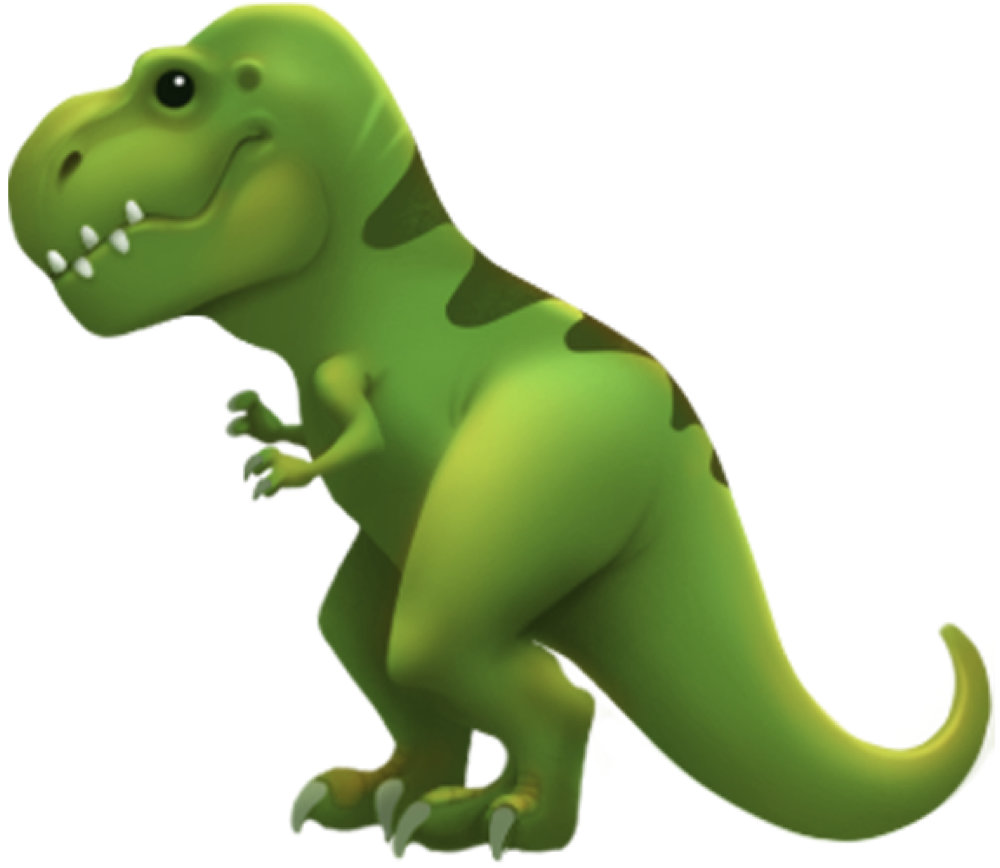
As do these T. rex ornaments that I recently spotted on sale in UK home and furniture store Dunelm. Surprisingly, they are licensed by London’s Natural History Museum.
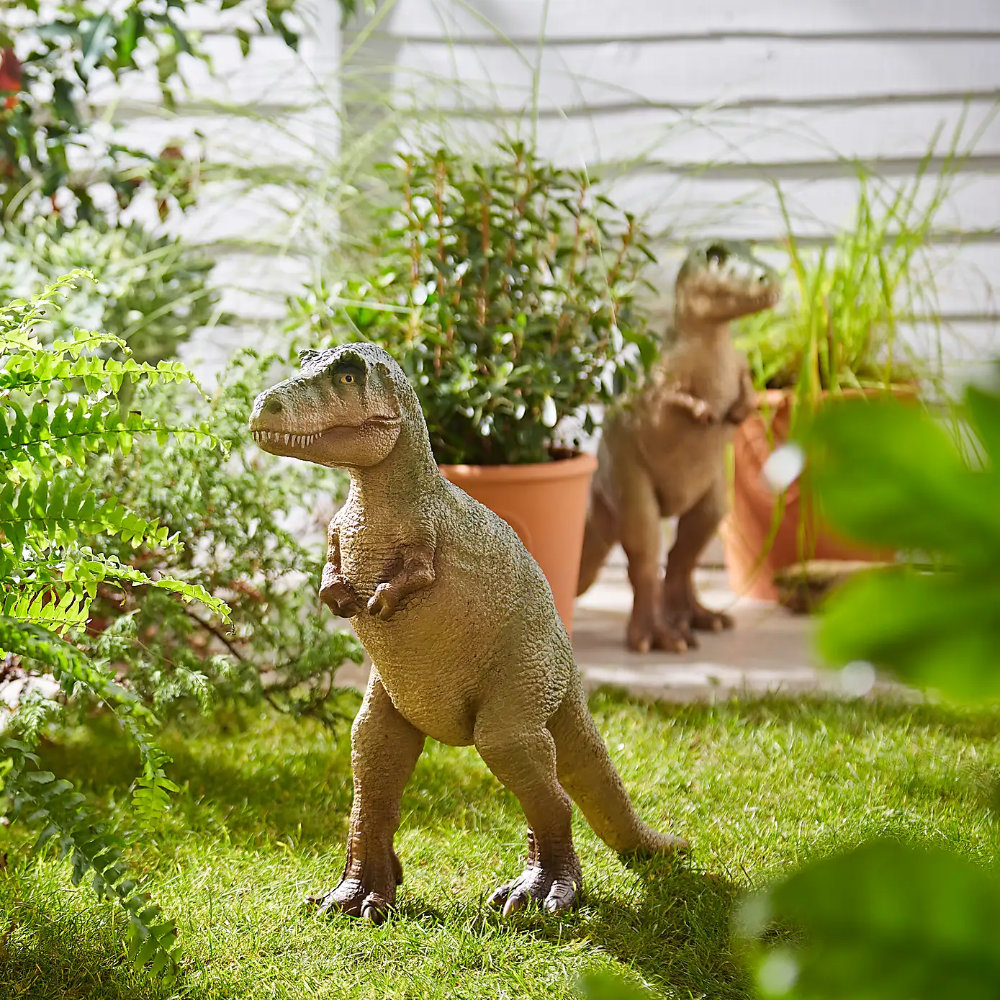
We’ll probably never be able to say with absolute certainty exactly what T. Rex looked like, but as new evidence is discovered and new scientific methods developed, the picture should become more and more accurate.
Here’s how Stieven Van der Poorten illustrated T.rex, “according to the latest evidence”, in The Tyrannosaurs Feathers.
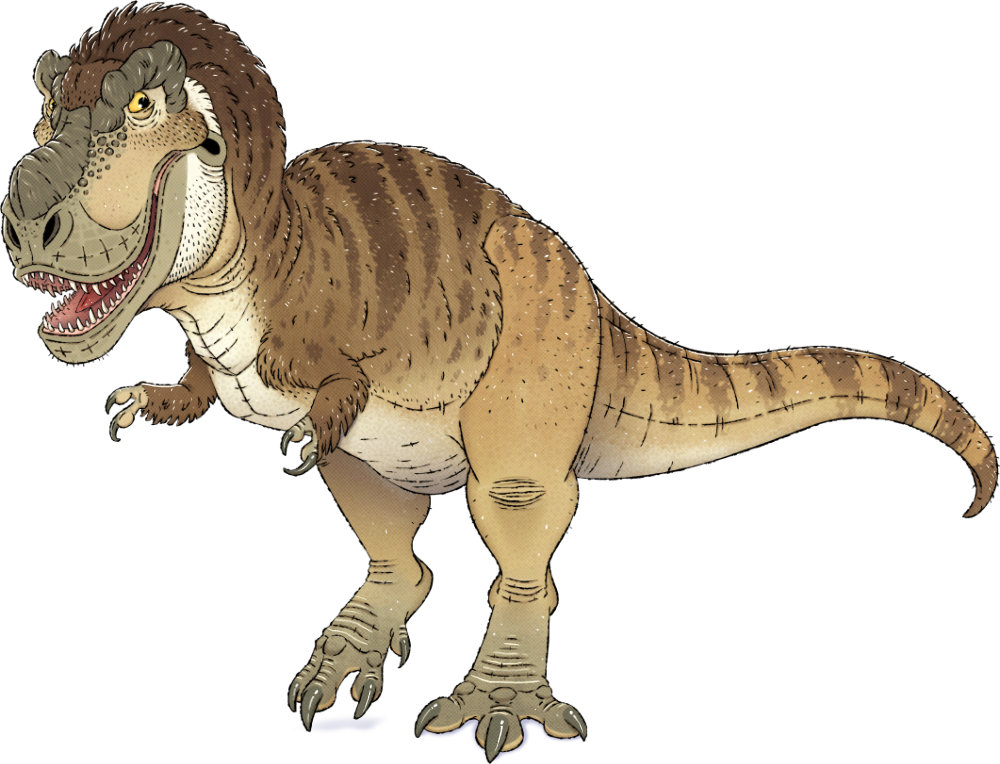

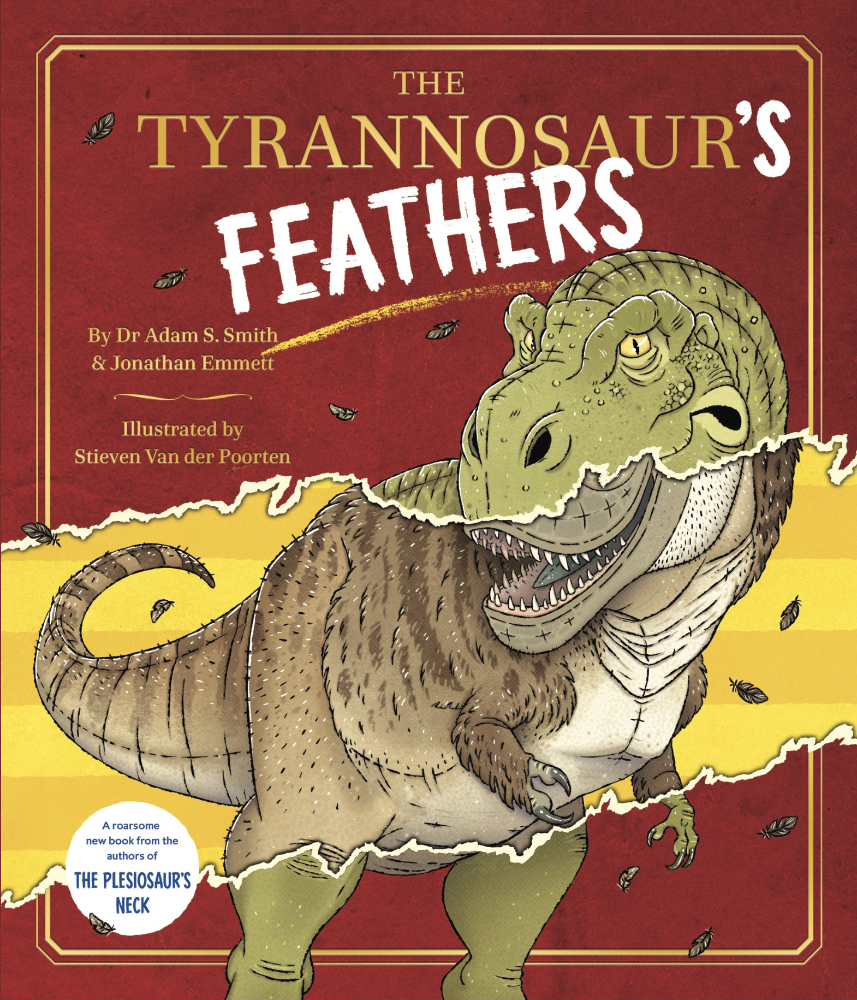





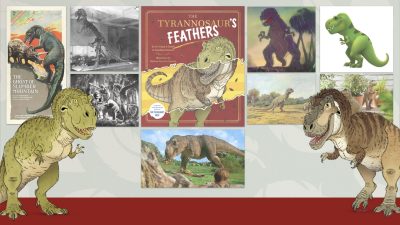


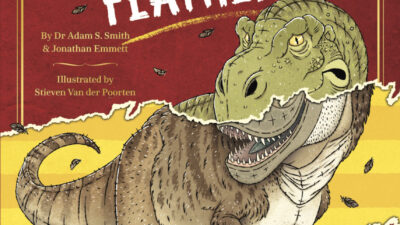
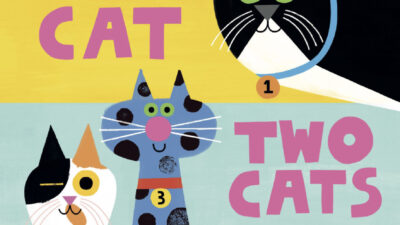

2 responses
Burian’s piece depicts the Asian Tarbosaurus bataar rather than T. rex. The latter does feature in a very well-known painting in which it’s chasing down a Trachodon pair.
Thanks for flagging this up, Marc. I’ve revised the post accordingly.